As a progressive livestock farmer, you know already know that growing improved pasture varieties like ryegrass, clover, lucerne and kikuyu can help you achieve two important goals.
First, it can help you improve animal health and productivity. And secondly, it can also lower your feed costs and help you earn more profits.
This is as important as it gets. But, there are a few diseases, pests and weeds that can stand in your way and prevent you from getting maximum pasture yields.
I wrote this guide to help you identify these common pasture diseases, pests and weeds. I will also help you learn how to identify, prevent and treat them.
You may already know about a few diseases, pests and weeds, either from personal experience or by learning about them from your family, another farmer or an agricultural professional. But, you may not have this information accessible in one place.
This free guide will give you all the information you need at your fingertips in one place. It is divided into 4 sections:
- Diseases in improved pastures
- Pests in improved pastures
- Weeds in improved pastures
- Effectively managing improved pastures
If you stick with me until the end, under these 4 sections, I will help you find definitive answers to the following questions:
Section 1: Diseases in improved pastures
- What causes diseases in improved pastures?
- What are the common diseases that affect clover pastures?
- What are the common diseases that affect lucerne pastures?
- How to prevent diseases in your improved pastures?
Section 2: Pests in improved pastures
- Common pests in improved pastures?
- What pests affect your ryegrass pastures?
- What pests affect your clover and lucerne pastures?
- How do you prevent pest outbreaks in your improved pastures?
Section 3: Weeds in improved pastures
- Why are billions of dollars lost every year? And what do invasive weeds have to do with this?
- What are weeds? And why should you manage them?
- Different types of weeds, how they grow and when to manage them?
- How to manage weeds on your improved pastures?
Section 4: Managing improved pastures
- What deeper problem do diseases, pests & weeds indicate?
- How can you effectively manage soil fertility, rotational grazing and crop rotation?
Let’s begin by first looking at a few microscopic organisms and understanding what causes diseases.
Section 1: Diseases in improved pastures
What causes diseases in improved pasture species?
Improved pasture species such as ryegrass, clover and Lucerne are all susceptible to bacterial, fungal and viral diseases.
Viruses are very tiny organisms. They don’t have any cells and depend on other organisms for survival. Bacteria are unicellular organisms. On the other hand, fungi are slightly bigger, more complex organisms.
The vast majority of bacteria, virus and fungi are harmless. But some of them harm your improved pastures. Let’s learn more about these harmful ones.
Common diseases that affect clover pastures
Some of the most common viral diseases that affect clover pastures are:
1. White clover mosaic virus (WCMV)
WCMV is common in clover pastures that are more than three years old and can significantly reduce dry matter yields. It also stunts the growth of clover and makes it less likely to thrive in a pasture sward.
Affected plants develop yellow markings along the veins. This is typically more noticeable on actively growing plants in spring and autumn. Affected plants may lack vigor but rarely die.
WCMV is typically transmitted by mechanical means such as grazing livestock, tractors and mowers. At present there are no effective control measures or WCMV resistant clover cultivars.
2. Alfalfa mosaic virus (AMV)
AMV can significantly reduce yields in clover stands that are older than two years. It causes an interveinal light green or yellow mottle on the leaves and a stunting of the plant.
Depending on the virus strain, clover cultivar and how cool the temperature is AMV can go unnoticed or even cause plant death.
Infected seed is the most likely primary source of infection. AMV is transmitted by a variety of aphids. At present there are no effective control measures or no AMV resistant cultivars.
3. Clover phyllody
This is caused by mycoplasma, a virus like organism. Affected clover plants are stunted, with yellowing of veins and bronzing of old leaves. In some cases, flowers get transformed into clusters of green leaves.
The clover phyllody mycoplasma is carried over by other hosts such as the leaf hopper. It does not transmit via seed.
It spreads mostly during hot dry summers. While spraying might help, there are no cost-effective measures to control this disease on a large scale.
Some of the most common fungal diseases that affect clover pastures are:
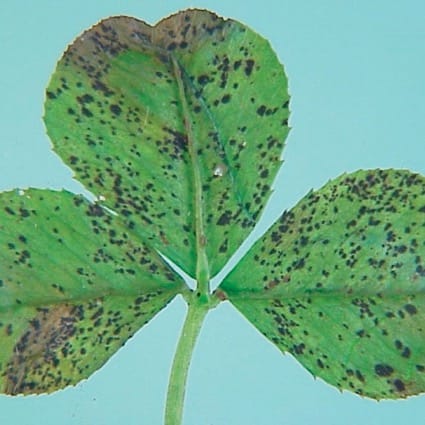
1. Clover rot
Clover rot is caused by the fungus Sclerotinia trifoliorum. Outbreaks of clover rot are most frequent in irrigated pastures. It can significantly affect clover yields. Young seedlings are particularly susceptible.
This fungus causes tiny brown spots on the leaves. Over time these spots join together and the leaf withers off. The fungus can also infect the stems and shoots, eventually killing the plant.
A severely affected patch of pasture can quickly turn into a mass of rotting plant material. Dead leaves and stems can be covered by small, black, irregular, dormant resting bodies called sclerotia. This can lie dormant for up to 5 years and re-infest a clover field when conditions are right.
2. Grey mold
Grey mold is caused by the fungus Botrytis cinerea. It is a minor disease of white clover which affects scattered plants, but never a whole stand.
Cool moist conditions and lush growth, favour the development of grey mould. They are typically transmitted by wind. This fungus can also survive on infected plant debris, seed and as resting bodies (sclerotia) in the soil.
3. Wart disease
Wart disease is caused by the fungus Physoderma trifolii when excessive moisture is present. The disease usually occurs in wet areas, such as river flats or in poorly drained soils.
Small swellings (or galls) develop on all parts of the plant. The galls eventually join and causes twisted leaves, stems and flowers.
Under excessively wet conditions the galls decay and the resting spores release zoospores which move to infect nearby plants.
4. Common leaf spot
Common leaf spot is caused by the fungus Pseudopeziza trifolii. As the name suggests, it is a common disease of pasture legumes, occurring in late autumn and winter.
The disease does not kill plants, and rarely causes serious economic losses. When severe however, plants can be defoliated, reducing hay quality and yield.
Round, dark spots occur across the upper leaf surface. Infected leaves turn yellow, then brown and finally wither to the ground. Elongated spots can also occur on the affected stems.
The fungus carries over on infected plant debris on the soil surface. Infected crop debris and spores can propagate via wind over short distances.
5. Pepper spot
Pepper spot is caused by the fungus Leptosphaerulina trifolii. It is quite similar to the common leaf spot disease and occurs in clover between late autumn and early spring, as it prefers cool moist weather conditions.
It usually does not cause serious herbage losses. However, when severe, this disease can reduce both yield and quality, especially crude protein content.
Affected plants develop round, dark spots on the leaves, stems and runners. The spots are usually confined to the upper leaf surface, and may be so numerous that the leaves appear covered in soot. Severe infections can cause the leaves to cup, turn brown and die prematurely.
Both infected plant debris and seed can further propagate this disease.
Keep pasture short; this will inhibit disease development by lowering humidity within the stand, and reducing the level of infected material which could carry-over the disease from season to season.
6. Black/ sooty blotch
Black or sooty blotch, is caused by the fungus Cymadothea trifolii. It is a relatively common disease of pasture legumes, but rarely causes losses. This disease is most prevalent in low, wet areas especially during late summer and early autumn.
Severe cases may affect yields as it stunts and partially defoliates plants. In some cases, horses, cattle, and sheep have been reported to have shown toxic effects and deaths after grazing infected stands.
Infected plants develop dark-green to black spots on the undersides of the leaves. Infected leaves gradually dry, become brown, and wither.
The fungus carries over on infected plant debris and has been reported to survive in the soil for up to five years. Spores are spread by wind and rain splash.
Keeping pastures short will help inhibit disease development by lowering humidity within the stand, and reducing the level of infected material which could act as a carry-over source.
Common diseases that affect Lucerne (alfalfa) pastures
Lucerne, also known as alfalfa, is a high quality, protein rich fodder crop. It can be grown in both rain fed as well as irrigated conditions.
It is one of the highest yielding forage legumes and can produce up to 25 tons of dry matter per hectare under optimal irrigated conditions. It can also be used as pasture, hay and silage.
But it is susceptible to a number of bacterial, viral and fungal diseases.
The most common bacterial diseases that affect Lucerne pastures are:
1. Bacterial wilt
This is caused by the bacterium Corynebacterium insidiosum. It first affects the plant roots and eventually spreads to all parts of the plant.
It causes a steady decline in plant health, yield and seed production. The bacterium can remain viable in hay for up to 10 years, and in the roots and crowns of infected plants. It may spread through surface water, insects, animals and even farm machinery.
Maintaining good soil fertility and using wilt resistant cultivars are your best options to control this disease. Also take care to avoid any plant or machine related root damages.
2. Alfalfa mosaic virus (AMV)
AMV can significantly reduce yields in lucerne stands that are older than two years. It causes an interveinal light green or yellow mottle on the leaves and a stunting of the plant.
Depending on the virus strain, lucerne cultivar and how cool the temperature is AMV can go unnoticed or even cause plant death.
Infected seed is the most likely primary source of infection. AMV is transmitted by a variety of aphids. At present there are no effective control measures or no AMV resistant cultivars.
3. Lucerne yellows
This is most likely caused by mycoplasma, a virus like organism. Affected lucerne plants leaves turn yellow to red-purple.
The lucerne yellows mycoplasma is carried over by other hosts such as the leaf hopper. It does not transmit via seed.
The most common bacterial diseases that affect Lucerne pastures are:
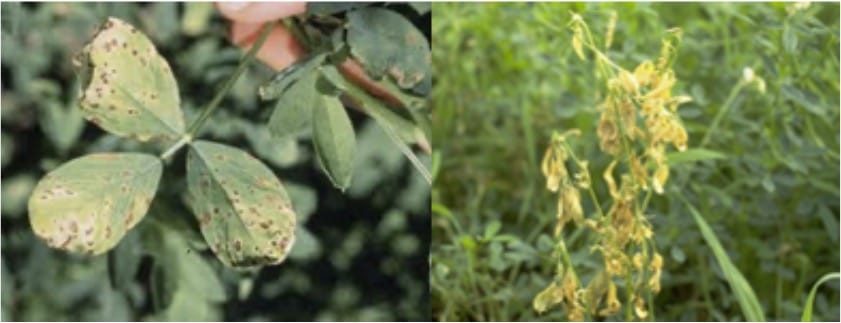
1. Common leaf spot
Common leaf spot is caused by the fungus Pseudopeziza medicaginis. As the name suggests, it is a common disease of pasture legumes, occurring in late autumn and winter.
The disease does not kill plants, and rarely causes serious economic losses. When severe however, plants can be defoliated, reducing hay quality and yield.
Round, dark spots occur across the upper leaf surface. Infected leaves turn yellow, then brown and finally wither to the ground. Elongated spots can also occur on the affected stems.
The fungus carries over on infected plant debris on the soil surface. Infected crop debris and spores can propagate via wind over short distances.
2. Pepper spot
Pepper spot is caused by the fungus Leptosphaerulina trifolii. It is quite similar to the common leaf spot disease and occurs in lucerne between late autumn and early spring, as it prefers cool moist weather conditions.
It usually does not cause serious herbage losses. However, when severe, this disease can reduce both yield and quality, especially crude protein content.
Affected plants develop round, dark spots on the leaves, stems and runners. The spots are usually confined to the upper leaf surface, and may be so numerous that the leaves appear covered in soot. Severe infections can cause the leaves to cup, turn brown and die prematurely.
Both infected plant debris and seed can further propagate this disease.
3. Rust
Rust is caused by the fungus Uromyces striatus. It is a very common disease of lucerne. Severe outbreaks can cause significant yield quantity and quality losses because of defoliation.
Affected plants have reddish-brown pustules under the leaves and on stems. When severe, leaves wilt and fall prematurely. Choosing rust tolerant cultivars are your best option to control rust.
4. Spring black stem
This is a common disease of lucerne which can cause reductions in yield and forage quality. It is caused by the fungus Phoma medicaginis.
Affected plants rapidly develop lesions on the stems. This continues until most of the stem is blackened. Severely infected stems wither and die. The leaves also turn yellow and wilt.
There aren’t any resistant cultivars or chemicals. Seed from drier regions are less likely to be infected. When affected, you could cut hay as early as possible to reduce losses through leaf drop.
5. Sclerotinia crown and stem rot
This is caused by the fungus Sclerotinia trifoliorum. It occurs in most lucerne growing areas. The greatest damage occurs when seedlings are affected.
The fungus infects the base of the stems, near the soil line, and causes rapid wilting. A white cottony fungal mold may develop on the infected tissue during moist weather.
Like other fungal diseases, this also becomes dormant and develops into small, hard, black sclerotia. This can stay viable for many years and can be propagated to other areas through wind and water.
There are no resistant cultivars. Your best options are to use sclerotia free seed and to closely graze the crop in autumn to reduce humidity within the stand.
How to prevent disease attacks in improved pastures?
In general, most bacterial and viral diseases can be reduced by selecting good seed and resistant cultivars. On the other hand, fungal diseases can be limited by reducing humidity and excess moisture.
By closely grazing paddocks during autumn, you can reduce humidity within your improved pasture paddocks. Also, spores of several infectious fungi can spread via droplets of water on cutting equipment. So a good practice is to cut only completely dry foliage. This will reduce the spread of pathogens.
Most pathogens also don’t survive well in the absence of a host plant. So practicing crop rotations every three to five years will ensure good soil health and at the same time also reduce incidences of disease.
Corn, small grains, soybeans, brassicas, medics and forage grasses are good rotation crops that can help reduce pathogens that affect improved pastures.
Several root rot fungi are most active in poorly drained soils. So choose only well-drained sites to grow your improved pastures. This will help you reduce root rot diseases to a large extent.
In case of a fungal disease outbreak, the fungi can survive for up to five years in a dormant state known as sclerotia. Only deep ploughing can help you bury the sclerotia and reduce chances of a re-infestation.
Good irrigation management will also help you maintain optimal growing conditions that prevent disease attacks and maintain healthy soil. It can help you prevent both water logging and dry conditions.
Section 2: Pests in improved pastures
What are the common pests that attack improved pastures?
Livestock farmers choose to grow improved pasture species such as ryegrass, lucerne and clover to get a higher yield as well as better nutrition value out of their pastures.
However, this also increases the chances of a pest attack. And because there is now more at stake, you would want to prevent, identify and treat these pests as quickly as possible.
To do this, you need to first know a few things about these pests that can affect your improved pastures.
Important pests that can affect your ryegrass pastures
Ryegrass is a low-risk, high-yield pasture species that is particularly well suited for regions that have a cool temperate climate.
This is why ryegrass pastures are prevelant across Australia, the UK, the USA, New Zealand, Norway and South Africa. However, ryegrass is susceptible to frit fly, leatherjacket and chafer beetle pest attacks.
Let’s learn more about each of them.
The Frit Fly:
Frit flies in general can damage a range of cereals, grasses and spring sown maize. But more specifically, they can cause a lot of damage to ryegrass pastures. And amongst ryegrass varieties, the annual ryegrass is even more susceptible to a frit fly attack.
Frit flies reproduce very quickly. They produce up to three generations within a year. Mature females lay eggs on the grass. The eggs then become yellowish-white larvae.
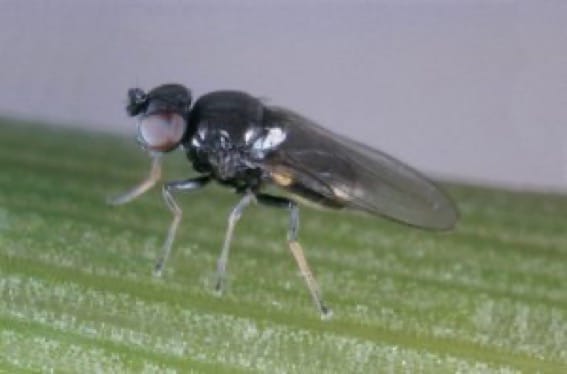
The larvae continually feed on the ryegrass shoots and become a pupa. This can either leave the plant stunted or even kill the plant. The pupa then matures into adult flies that continue this cycle.
Adult frit flies are particularly active during autumn. Why? Because their main egg laying period is just before autumn. This is why your autumn reseeds are at a greater risk of a frit fly attack.
So how do you control this?
Firstly, your best bet is to plan your pasture reseeding outside the main frit fly egg laying. As discussed, this is just before autumn. So don’t reseed in autumn, at least don’t when it is avoidable.
Secondly, where possible, you could consider having a few rows of a different crop such as medics or brassica. This will prevent severe frit fly outbreaks from spreading across your farm.
And finally, as a last option, you could consider spraying chlorpyrifos. But this should be done with extreme caution as it can also reduce populations of beneficial beetles and microbes.
Most importantly, keep monitoring your ryegrass crop especially in the early stages so that you can take quick action if there is a frit fly attack.
Leatherjacket:
Leatherjackets are the larvae of craneflies commonly known as ‘daddy-long-legs’. With an obvious head and legs they may look harmless at first, but beware. They can cause a lot of damage to your pasture.
They have a tough and rubbery skin. And unlike the frit fly, they don’t move around a lot. This can make it harder to spot a leatherjacket outbreak. But here are a few tips that can help you spot them.
First, most leatherjacket outbreaks happen around autumn and winter. So be extra careful in this season.
Second, look for patches of yellow or bare crop patches, this might indicate an outbreak. Because, leatherjackets attack plant stems at ground level causing it to turn yellow and then die.
And finally, be quick to investigate a paddock attracts a lot more birds than usual. This might indicate a leatherjacket outbreak. Because, a number of birds love to feast on leatherjacket grubs.

Controlling a leatherjacket outbreak is tricky because there are no straightforward solutions.
Chlorpyrifos can reduce their population drastically, especially if it is applied early, while the infestation is till mild. However, spraying also kills other beneficial microbes and insects.
On the other hand, preventive measures such as sampling your land for infestation during summer, ploughing your grasslands and practicing good crop rotation can help you prevent an outbreak.
Chafer beetle grubs:
Chafer beetles lay their grubs in late autumn. The white grubs have a light brown head and three pairs of legs right under the head. The grubs feed on plant roots all winter, until they mature into beetles.
Chafer beetle grubs can significantly reduce yields of your ryegrass pasture. They affect perennial ryegrass stands more. Similar to leatherjackets, an outbreak cannot easily be spotted, early on.
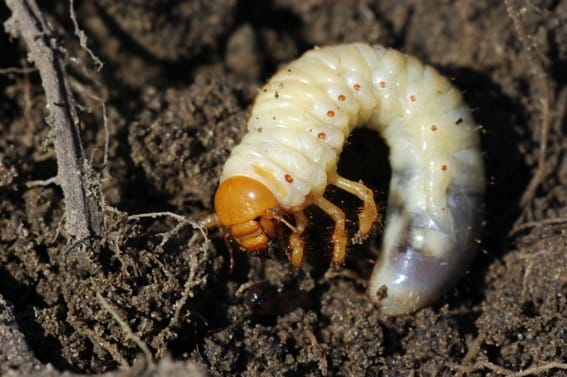
However, you can look for two key indicators. Brown bald patches of crops and an unusually high number of birds flocking a particular part of your farm. These might indicate an outbreak.
There are no clear control measures. Rows of other crops such as brassicas or medics between stands of clover and lucerne pastures can help. Similarly crop rotation, ploughing and reseeding can also help. But these are all preventive measures and not things you can put in place after an outbreak. Consult with your local farm advisor, in case of an outbreak.
Important pests that can affect your clover and lucerne pastures
Clover and lucerne are both high quality, protein rich, leguminous fodder crops that can be grown in rain fed as well as irrigated conditions across many countries in the world. However, sitona weevils and slugs can cause a lot of damage to them. Let’s learn more about both these pests.
Sitona Weevils:
Weevils are grey to dark grey-brown bugs that can fly over reasonably long distances. This means you can get a weevil attack even from another neighboring farm.
Weevils are typically most active around summer and autumn. They lay eggs in autumn and the next generation matures just around the following summer.
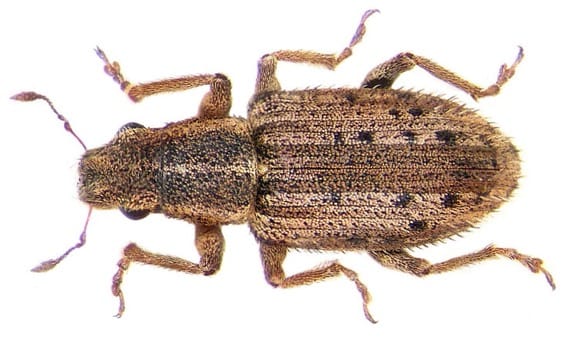
Adult weevils love to feed on the leguminous leaves of clover and lucerne. They cut ‘U’ shaped notches into the edges of leaves they feed upon. Weevil larvae also damage legume root nodules. This reduces the plant’s ability to fix nitrogen. This also increases the chances of a crown or root rot fungi infection.
There are no known chemical control solutions for a sitona weevil attack.
Slugs:
There are many types of slugs. However, you are most likely to encounter the common grey field slug. They graze a lot and can breed through the year. A pregnant female can lay up to 300 eggs in one cycle.
So it is important to take quick action immediately. You can identify a slug attack easily as they leave behind a slimy trail just like snails. In fact, they are snails without shells.
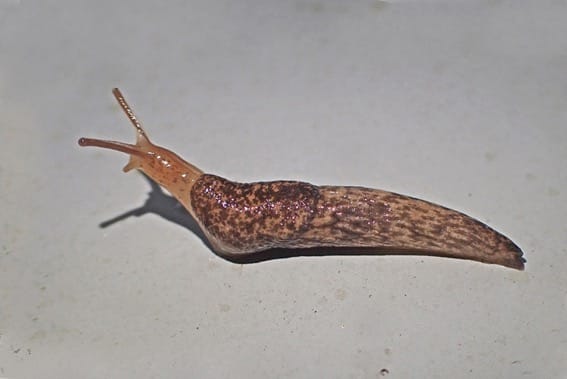
Slugs particularly affect new clover seedlings and reseeds more than mature swards. If an infestation occurs, quickly setup slug traps to assess population numbers and identify fields that are at most risk.
If each trap catches four or more slugs under a day, it means you have to intervene chemically. You might have to use slug pellets made of methiocarb, metaldehyde, ferric phosphate or copper silicate.
How to prevent pest outbreaks?
Based on everything we’ve discussed about pests, there are two key takeaways.
First, preventive measures such as rotation cropping, ploughing, planting barrier crops and early sampling are your biggest weapons against pests. So use them wisely even before you face a pest attack.
And secondly, take quick, decisive action early on to prevent large scale pest outbreaks. Intervene chemically only when absolutely needed as a last resort.
TO LEARN MORE ABOUT PESTS, READ:
- Pest management practices by USDA
- Pasture pests by Dairy Australia
- Pest insects by Agriculture Victoria
- Pasture pests by Dairy NZ
- AgPest, a free tool to assist New Zealand farmers and professionals in weed and pest identification
- Pests: The biggest threat to food security?
- The global burden of pests and pathogens
- Pest management in organic farming
Section 3: Weeds in improved pastures
Why are billions of dollars lost every year? And what do invasive weeds have to do with this?
It is estimated that invasive weeds cause billions of dollars in agricultural damages across the world. The top five most affected countries are China, USA, Brazil, India and Japan.
However, several other countries across the American, European and Australian continents also suffer significant losses from invasive weeds.
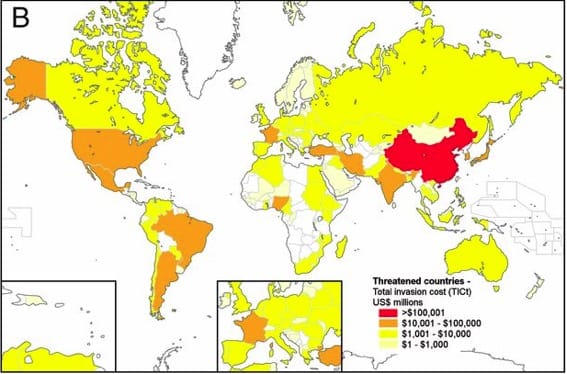
We now have several studies that show how invasive weeds cause significant damages to agricultural productivity, across countries.
- Pimentel et al. 2001, estimates that countries like USA, UK, India, South Africa, Australia and Brazil suffer a combined loss of about 306 billion dollars every year.
- Reinhardt et al. 2003, estimates that Germany suffers a loss of 113 million euros every year.
- Xu et al. 2006, estimates that China suffers a loss of about 14.45 billion dollars every year.
The central point of all these studies is that weeds cause a lot of lost food, productivity and money.
But now, that we understand how weeds affect productivity, let’s look more closely at the weeds that we’re most concerned with. The weeds that damage improved pasture varieties such as ryegrass, lucerne, clover and kikuyu.
What are weeds? And why you should manage them?
First of all classifying weeds are subjective. What might be a weed in one country and production system might not be a weed in a different country or production system.
For our purposes, we can call any unwanted plant as a weed. So, depending on the use and production system a plant may or may not be considered as a weed.
For example, briers are a weed in cattle grazing system. But they may not necessarily be a weed in a goat grazing system.
Similarly, pigweeds are a weed in most dairy farm systems across the world. However, they are an edible wild plant in most tropical countries.
Weeds emerge and develop voluntarily whenever and wherever they find a suitable niche in the environment. And because weeds compete with your forage plants for nutrients, moisture, sunlight, and space – they lower your pasture’s productivity.
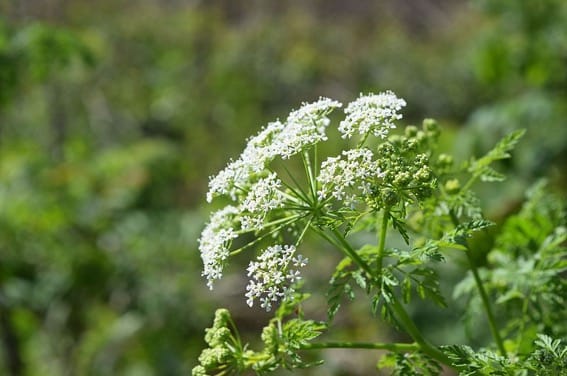
In most cases, when weeds are left on pastures, they establish strong roots and stems as well as food storage structures like rhizomes, tubers, stolons, and crowns. This means that they can be difficult to remove after a few seasons.
Moreover, weeds propagate very fast and produce a lot of seed. Some weeds such as pigweed can produce more than a 100,000 seeds in one growing season.
But even more importantly, weeds such as Paterson's Curse, Hemlock and Spiny Emex can affect your animals and at times can even make them fall sick.
This is why you should manage and keep your weeds under check at all times.
Different types of weeds, how they grow and when to manage them?
For our practical purposes it is useful to classify weeds based on their growth cycles.
Winter annual weeds: germinate in late fall and grow rapidly with the onset of spring. They typically flower, set seed, and die by late spring. A few examples of winter annual weeds include henbit, purple deadnettle, and common chickweed.
Summer annual weeds: start germinating in spring throughout summer when soil temperatures warm up. They typically flower from mid-summer through fall, and then die. A few examples of summer annual weeds include spiny pigweed, bitterweed, and marestail.
Biennials: live for about two years. They typically germinate over the first winter as low growing rosettes. They then grow elongated flower stalks the next year where they flower, set seed, and die. The musk thistle is a good example of a biennial.
Perennials: live for more than two years. They typically reproduce from root crowns, creeping lateral roots or underground creeping stems called rhizomes. Examples of perennials include dogfennel, horsenettle, buckhorn plantain, blackberry, woody shrubs, trees, and many vines such as English ivy and honeysuckle.
For best results, you need to control your weeds based on their growth cycle.
For example, it is futile to spray a herbicide like glyphosate in spring to kill winter annual weeds such as dead nettles. Because, by this time, it has already set seed and is on its way towards dying out. The spraying will neither effectively stop the next cycle nor justify the expense of killing weeds that were bound to die anyways in a few weeks.
How to manage weeds on your improved pastures?
You can use one or more of these following methods to manage weeds on your pasture:
Maintain fertility and soil pH:
As discussed earlier, weeds look to dominate ecological niches that are not conducive for the growth of your crops or pasture. So you can control weeds by maintaining your soil fertility and pH.
Based on soil test recommendations, you would need to add the necessary amounts of lime and fertilizers to your pasture soil. This will ensure that your pasture soil remains fertile and has a balanced pH. And more importantly provides the necessary conditions for your pasture to remain competitive against weeds.
Use the right quality and quantity of seed:
After your pasture soil, the next most important aspect is your pasture seed. Irrespective of what improved pasture variety you are planning to grow, you must get enough good quality seed, without any contaminants or weed seeds.
Use enough seed to fully cover your pasture paddocks. Using too little creates opportunities for weeds to overtake your pastures.
At the same time, using too much can also result in lower growth rates due to unnecessary competition among your pasture plants. And thereby again provide opportunities for weeds to take over.
Practice crop rotations:
Rotating your crops give you two advantages.
First, it helps you grow different crops, with different root systems, that extract different nutrients from your soil. This allows you to better maintain soil fertility.
And secondly, it helps you till the soil, remove existing weeds and disrupt weed cycles. This reduces opportunities for weeds to take over your pastures.
Manage your grazing routines:
Continuous grazing systems that aren’t properly managed encourage more weeds.
Why? Because you won’t have any control on how long your animals graze, unmanaged continuous grazing systems will lead to overgrazing of palatable species. In turn, this will lead to weaker root systems and even create bare patches. Both these conditions encourage the growth of weeds.
In addition to this, as a by-product of overgrazing the palatable species, the less palatable species and weeds growing on your pasture will be under grazed. In turn, this will help them grow taller and bigger, before ultimately shading out the more palatable species. This will result in unproductive pastures.
In contrast, rotational grazing systems divide your pasture into paddocks and animals are allowed to graze one section at a time until the desirable stubble height of forages is reached and are then moved to next paddock.
Because animals are only allowed to graze in a particular area for a very short time, both overgrazing and under grazing is minimized. Also such a system gives the pasture root systems a good chance to establish themselves. This means that plants quickly recover and a good sod is always maintained. All this prevents weeds from overtaking your pastures.
Use mechanical means of control:
Sometimes, all the above preventive measures may fail and you may end up having a lot of weeds in your pasture. In this case, you should consider removing weeds using mechanical means such as cutting, uprooting or mowing.
But weeds should be removed before they put out seed. Otherwise, you risk spreading the weed seeds over a larger area. Annual weeds in general are easier to manage. In some cases, a single mowing might contain them. However, perennial weeds can require more attention. You might need to remove and mow them multiple times before they are all completely killed.
Use chemical means of control:
And as a last resort, you can consider using appropriate herbicides at suitable stages of weed growth. Today, there are a wide range of herbicides available for many pasture weed problems.
However, a single herbicide treatment will not solve all weed problems permanently. This is an unrealistic expectation that many people have and they are quickly disappointed when weeds return.
To use herbicides safely, be sure to understand its usage directions given on its label. In addition to this, you also need to understand the herbicide’s efficacy, persistence, rate of application, and method of application. Talk to your local farmers and farm extension workers before choosing an herbicide.
TO LEARN MORE ABOUT WEEDS, READ:
Section 4: Managing improved pastures
Diseases, pests & weeds indicate a deeper problem.
Most people don’t get to this point. But you did. Congrats. Clearly you’re hungry to learn more and become a better livestock farmer. So let me tell you something important that can help you a lot.
Most farmers treat diseases, pests and weeds as the problem. Clearly it is a problem, they cause severe losses. But they aren’t the root problem.
Remember, earlier in this guide, we discussed how weeds have a better chance of overtaking pastures that have low soil fertility?
Latest research studies are now showing evidences that healthy soils produce healthy plants that better resists pest attacks. Similarly, recent studies now show that nutrient rich soils can reduce disease attacks to an acceptable level, at which they can successfully be controlled at a much lower expense.
This means, pastures with poor soil health are much more susceptible to diseases, pests and weeds.
And what causes poor soil health? The answer is ineffective fertilizing, grazing and cropping management practices. This is the root problem, while diseases, pests and weeds only indicate this.
Conversely, effective fertilizing, grazing and cropping management practices will lead to better soil health. And in turn produce more healthy disease, pest and weed resistant plants.
TO LEARN MORE ABOUT DISEASE, PEST AND WEED RESISTANT CROPS, READ:
- Soil Health & Biological control of pests – By Penn State Extension
- Role of nutrients in controlling plant diseases in sustainable agriculture
- Soil fertility management and insect pests
- Soil Fertility, Biodiversity and Pest Management
- Crop Rotation Effects on Soil Fertility and Plant Nutrition
- Improving Soil Health to Suppress Soil Borne Diseases
Manage your soil fertility, rotational grazing and crop rotation effectively.
But, how can you use this information?
How will you get the time to collect enough data to make effective fertilizing, grazing, and cropping management decisions?
And how will you do this when you’re already busy working on your farm?
Answer: This is where latest technology advances can help you.
Imagine for a moment that you could have a reliable farm worker dedicated to help you measure your pasture, calculate how much fertilizer you need, collects and maintains all your farm records in one place and helps you take effective data-based farm management decisions.
Pasture.io is that farm worker you always needed. Our proprietary satellite and AI technology can now replace this fictional farm worker, do all his work and send you effective management recommendations on your smart phone, automatically several times a week.
Pasture.io can help you measure and manage your pasture, effectively. For example, you can get automatic updates on your phone, that show you which paddocks your animals can graze next for optimal results.
We’ve built several tools to help you effectively manage your spraying, fertilizing, and sowing activities. And we help you take effective decisions based on data from your farm.
For instance, we built the leaf emergence calculator, a tool to help you graze your pasture at the right leaf stage. To help you optimize grazing schedules and achieve quicker pasture regrowth.
We built the nitrogen calculator to help you understand how much Nitrogen your pasture needs, how much it will cost you and how this compares to the costs of buying feed from outside.
We built our area allocation calculator to help you quickly decide how much pasture you need to grow based on data from your farm, herd, local weather conditions and irrigation setup.
In other words, pasture.io makes it easier for you to take the right decisions, amidst your busy work day.
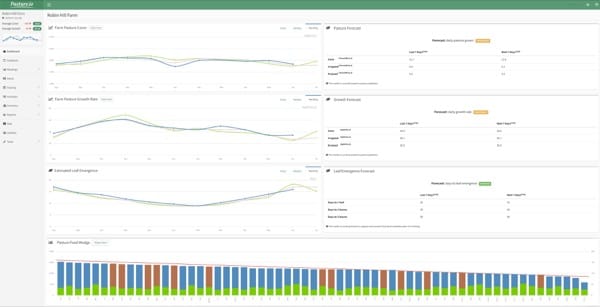
And all these good decisions add up to help you lower production costs and increase profits.
For example, Stuart Barr, a dairy farmer from Ringarooma, Tasmania now makes an additional profit of 80,000 dollars, every year on his dairy farm. Just by using Pasture.io to help him manage his pasture.
You too can now manage your pasture more effectively and effortlessly.
In case you’re interested, we have a simple pricing structure. You play a flat fee of AUD 1,099 per year, and then pay AUD 8 per hectare per year. So, if you own 150 hectares, you will pay about AUD 15 per hectare per year.
And in case you want something simpler; we also offer you a forever free plan that costs you nothing.




















